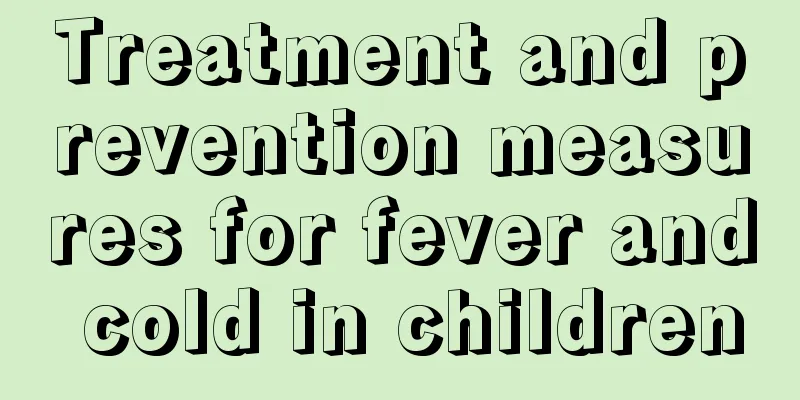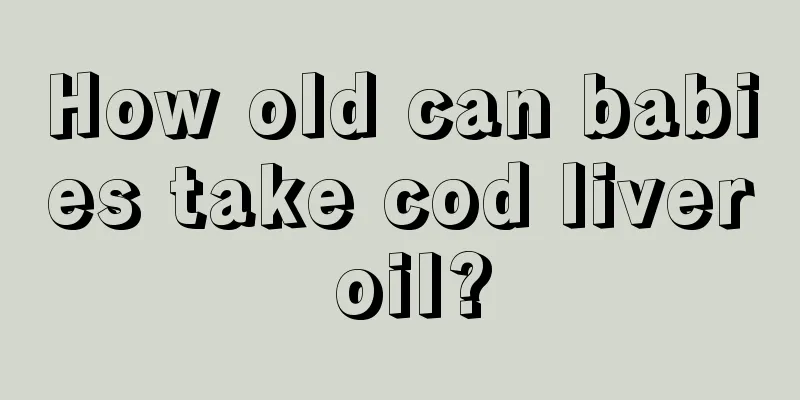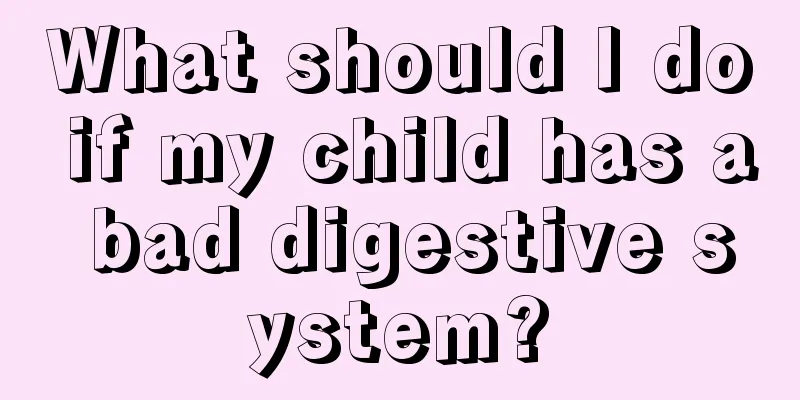Treatment and prevention measures for fever and cold in children

|
Are there any good treatments and preventive measures for young children's fever and colds? In fact, many mothers know that the key to disease prevention is prevention. Only by eliminating all possibilities of illness can we avoid the trouble of treatment. Any treatment of any disease will more or less cause certain harm to the body. As the saying goes, all medicines are three-point poison. There is no way to treat a cold without taking medicine. Now let us learn about the treatments and preventive measures for young children's fever and colds. 1. Definition of cold Acute upper respiratory tract infection is commonly known as cold. It is inevitable that children will catch colds and have fevers after they are born, and some children with weaker constitutions will catch colds repeatedly. Most colds are caused by viruses. Since there are many types of viruses, the severity of the illnesses they cause varies. Children should rest more when they have a cold and fever. When the fever is high, it is emphasized that you should stay in bed and rest to reduce physical exertion and prevent the occurrence of complications. Try to reduce the number of guests visiting your home, and avoid smoking indoors to keep the indoor air fresh. 2. Physical cooling Apply a cold towel or a cold bag to the forehead. Wrap a handkerchief around the cold bag to reduce the irritation of the cold on the child's skin. Note that when performing these self-cooling treatments, if you experience so-called cold reactions such as cold hands and feet, whole body shaking, purple lips, etc., you must stop this cooling method immediately. Warm water bath, that is, use a small towel with warm water to wipe the limbs and the front and back of the chest. In addition, taking a warm water bath can also help dissipate heat. 3. Principles of medication for children with colds and fevers The dose should not be too large and the duration of use should not be too long. Drink plenty of water while taking the medicine to facilitate the absorption and excretion of the medicine and reduce the toxicity of the medicine to the child's body. Children under 3 years old, whose liver and kidneys are not yet fully developed, should take the medicine in small doses. Children or their family members who have a history of allergy to antipyretics should not use antipyretics. Do not take antipyretics and alkaline drugs at the same time. 4. Preventive measures for children with colds and fevers Children are in the stage of growth and development, their metabolism is active, and their requirements for energy and nutrients are relatively higher than adults. Only by meeting the nutritional needs of children can we ensure their normal physical and intellectual development and form good physical fitness. A reasonable diet should not only pay attention to the dietary structure, and achieve a combination of staple and non-staple foods, coarse and fine grains, and meat and vegetables, but also cultivate children's good eating habits, eat at regular times and in fixed quantities, not be picky eaters, and try to eat less snacks, especially sugary snacks and cold drinks. Although candy can increase children's fun and provide some calories, eating too much can suppress appetite and is not good for children's health. 5. Pay attention to physical exercise Physical exercise can promote children's growth and development, improve their ability to adapt to the natural environment and enhance their resistance, reduce diseases and maintain health. The methods of physical exercise vary according to the age of the child. It can be carried out in daily life using air, sunlight and water, or through games and sports. Children should be dressed appropriately from birth and not too warmly. The room temperature should be appropriate, and the room temperature does not need to be too high in winter. Frequent ventilation should be carried out to keep the air fresh. Children should be trained to gradually live in a colder environment. Outdoor activities can allow them to breathe fresh air, so that the skin can be exposed to ultraviolet rays in the sun, increase the synthesis of vitamin D in the body, which is beneficial to bone growth and prevent the occurrence of rickets. Children's outdoor activity time in summer should be maintained at more than 2 hours a day. Some time should also be arranged for outdoor activities in winter. Regarding the treatment and prevention measures for fever and colds in young children, we can probably conclude that the physical fitness and metabolism of children of different ages are different. The specific treatment method depends on the child’s own immunity and resistance. What mothers can do is to strengthen their children’s physical exercise and enhance their immunity. Only in this way can they avoid the invasion of colds. |
<<: What are the first aid measures for children with fever?
>>: What are the emergency measures for children with fever?
Recommend
How to make delicious baby butterfly noodles
After the baby has been drinking breast milk for ...
What complementary foods are available for 17-month-old babies?
For new mothers, not only do they need to take go...
How to tell if your child has ADHD
Currently, there are more and more children suffe...
How to dress newborns in winter?
Pregnant mothers are both excited and overwhelmed...
How to treat children's big neck
Goiter is a very common human disease. In reality...
The harm of children's fear psychology and the correction methods of children's fear psychology
Mental health directly affects a child's life...
Green poop for newborns?
Newborn babies are generally unable to speak beca...
Treatment of myasthenia gravis ocular type in children
Many children are born with severe physical probl...
Treatment of inguinal hernia in children
Children are more likely to be infected with bact...
What to do if your baby has nail ulcer?
Long nails are prone to harboring dirt and breedi...
Why does my four-month-old baby suck his lower lip?
After the baby becomes conscious, he will make so...
How should children practice yoga?
Yoga is a sport that tests a person's flexibi...
Causes of fever in children's hands and feet
Relatively speaking, children's constitution ...
One-year-old baby forehead bone protrusion
The protruding bones on the forehead of a one-yea...
When is the best time for children to brush their teeth?
Teeth indicate a person's health, but many ch...









